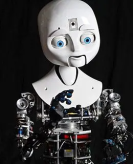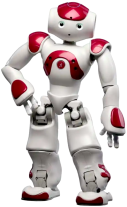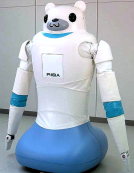Using a raised eyebrow or smile, people with speech or physical disabilities can now operate their Android-powered smartphones without using their hands, Google said on Thursday.
Two new tools put machine learning and front-facing cameras on smartphones to work, identifying face and eye movements. Users can look at their phone screens and select a task by smiling, raising eyebrows, opening their mouths, or looking to the left, right or up.
The Centers for Disease Control and Prevention states that 61 million adults in the United States live with disabilities, which has pushed Google, Apple and Microsoft to make products and services more accessible to them. “Every day, people use voice instructions, like ‘Hey Google’, or their hands to operate their phones,” the tech giant Google said in a blog post. “However, that’s not always possible for people with serious physical or speech disabilities.”
The changes are the result of two new features: One is called “Camera Switches”, which lets people use their faces instead of taps to interact with smartphones. The other is Project Activate, a new Android application which allows people to use those gestures to start an action, like having a phone play a recorded phrase, send text, or make a call. The free Activate app is available in Australia, Britain, Canada and the United States at the Google Play Store.
Apple, Google and Microsoft have kept rolling out inventions that make Internet technology more accessible to people with disabilities or who find that age has made some tasks, such as reading, more difficult. Voice-instructed digital assistants built into speakers and smartphones can enable people with sight or movement challenges to tell computers what to do. There is software that identifies text on web pages or in images and then reads it aloud, as well as automatic generation of captions that display what is said in videos. Apple built “AssistiveTouch” into the software powering its smartwatches. It lets touchscreen displays be controlled by sensing movements such as finger pinches or hand clenches.
1. What is the main role of the two new tools?| A.Taking sharper photographs with a phone. | B.Using smartphones with face gestures. |
| C.Curing people’s speech or physical disabilities. | D.Increasing the fun of playing with smartphones. |
| A.It’s sold at a high price. | B.It’s mainly used to send texts. |
| C.It’s instructed by voice. | D.It’s being used in a few countries. |
| A.Picking out. | B.Referring to. | C.Bringing out. | D.Reacting to. |
| A.To promote Android-powered smartphones. |
| B.To encourage more movements suitable for the disabled. |
| C.To explain the problems disabled smartphone users have. |
| D.To introduce some other inventions benefiting the disabled. |
相似题推荐
【推荐1】Don’t you think robots are a part of your life? In factories, robots put together everything from toys to cars. Some homes have robots that sweep floors or mow the lawn (剪草坪). And more robots are soon to come.
| Like a Human Robots don’t expect any thanks for all the work they do for us. After all, they don’t have feelings. But that may be changing with Nexi, a robot created by scientists at the Massachusetts Institute of Technology. Nexi can move its face to show anger, happiness, or sadness. It can also raise its eyebrows to show surprise. |
| ________ How would you like a robot to help clean up your toys, or one that plays hide - and - seek with you? Nao can be programmed to do both those activities, and more. A two - foot - tall robot, Nao was designed by a company in France to be a helper and companion. It can talk, walk and even remember faces, voices, and places. Also, it can be programmed to assist with daily tasks, such as checking e - mails. |
| Robots at Work Need a lift out of bed? RIBA, short for “Robot for Interactive Body Assistance”, will lend its helpful arms! Some patients at hospitals and nursing homes have a hard time getting in and out of bed. RIBA can gently lift a patient out of bed and help him or her into a wheelchair. The robot can safely pick up and carry people weighing 135 pounds. |
| Water Bots Robots that work in water - and look like familiar sea creatures - are making news lately. One of them is a robotic fish. Researchers built the robo - fish to swim in water to detect pollution. There’s even a robotic penguin called the AP, which uses flippers (鱼鳍) to paddle and can move in all directions. |
Experts predict that by 2025 we could have robots in every household! You might be living or working with one of them every day!
1. If a patient needs assistance out of bed, which may be a good helper?| A.Nexi | B.AP | C.Nao | D.RIBA |
| A.discovering fish | B.picking up rubbish | C.studying sea creatures | D.finding out pollution |
| A.Household Helpers | B.Programme Designers | C.Hotel Cleaners | D.Game Players |
【推荐2】For as long as humans have been monitoring the ocean, the only way we’ve known about stranded (搁浅的) whales was to come across them ourselves. But knowing about stranded whales — including where and when they strand — is important.
Largely due to human causes such as ship strikes and pollution, whale strandings are on the rise. Their occurrence can often signal that something is wrong before larger ecosystem problems arise. Yet the ground-based networks used to monitor stranded whales are just available for wealthy countries.
A new study conducted by Penny Clarke, a graduate student with the British Antarctic Survey, shows that very high resolution (VHR) satellite imagery makes it possible to spot stranded whales in remote areas where it may otherwise take weeks to find them. By that point, animals are often long decomposed (腐烂的), making it too late to figure out what caused the stranding or take action to fix it.
The first satellite with VHR sensors was launched in 1999. With the number of them now slowly climbing, Clarke’s team sees this sort of imagery as a tool that allows less-wealthy countries to monitor a vast area with just a few people.
However, the satellite approach does have some limitations. As Clarke found, images may not be available for the date range researchers want; there are currently only 27 VHR satellites circling Earth. Moreover, satellites only take photos when given orders to open their lenses. Tasking a satellite is expensive, and even accessing archived (存档的) images can come with a big price tag.
Additionally, identifying whales requires manually (人工地) scanning for the right shapes, frame (帧) by frame. In 2019, a team led by Clarke’s co-author, Peter Fretwell, tried to automate this process. They found that because dead whales change so drastically as they decompose, their way wasn’t very accurate. It often confused whales with features like rocks or washed-up trees.
Next up, Clarke hopes to test the effectiveness of satellite monitoring by working on the ground with experts during stranding events so that she can see for herself what satellite imagery misses. “We don’t know enough about some of these challenges weepers going to be coming up against,“ she says. Yet the potential for this technology excites her immensely. “It’s quite literally out of this world.”
1. What is the significance of discovering whale strandings in time?| A.To help control the whale population. | B.To guard against bigger ecosystem risks. |
| C.To send the stranded whales to the ocean. | D.To reduce dead whales’ influence on ecosystems. |
| A.It can only be operated at a high cost. | B.It is expected to perform various tasks. |
| C.It poses challenges to wealthy countries. | D.Less-wealthy countries can hardly afford it |
| A.To find a better way to examine dead whales in detail. |
| B.To call on local people to help recognize dead whales. |
| C.To make the process of recognizing dead whales more efficient. |
| D.To record the changes in dead whales with advanced technology. |
| A.Doubtful. | B.Worried | C.Cautious. | D.Hopeful. |
【推荐3】Back in the early 2000s, lots of people couldn’t have imagined life without alarm clocks, CD players, calendars, cameras, or lots of other devices. But along came the iPhone and other smartphones, and they took over the functions of dozens of things we used to think were essential.
The smartphone story could even be a model for fighting climate change; not because smartphones use a small part of the energy of all the things they replace - although they do-but because they represent a different approach to design in general. And that approach is to focus on function rather than form. That requires focusing on understanding the underlying problem,and then engineering a wide range of potential solutions. This approach could revolutionize how we think about energy efficiency.
Traditionally, improvements in energy efficiency have mostly focused on individual devices, which can be quite fruitful. But focusing on individual devices is like if Apple had spent effort inventing a better alarm clock, a better CD player, a better calendar, and a better camera. Now with an iPhone, we don’t need the standalone(独立运行的) devices at all, because it can function as all of them.
So when it comes to using energy efficiently, rather than just installing a more efficient heater,some people have focused instead on the desired function: staying warm. They designed and coated their house so well that they could get rid of their heater altogether, letting them heat their house with 99% less energy.
In the same way, rather than just making cars more efficient, what if we focus on the desired function-getting where we want when we want-and create an efficient transportation system where we can drive less or get rid of our personal cars entirely?
The most energy efficient car or heater is no car, or no heater, while still being able to get around and stay warm. In other words, it’s not thinking efficient, it’s thinking different.
1. What makes the iPhone a good example of environmental protection?| A.Perfecting individual devices. | B.Combining possible functions. |
| C.Adopting a simplest design. | D.Reducing the energy consumption. |
| A.Using recyclable materials. | B.Revolutionizing technologies. |
| C.Figuring out various solutions. | D.Concentrating on the essential needs. |
| A.Fruitless. | B.Out-of-date. | C.Adequate. | D.Perfect. |
| A.Think out of the box. | B.Differences make it unique. |
| C.Be economical with energy. | D.Step out of the comfort zone. |
【推荐1】The following list of books centers on joyful African-American children. Each title can provide a unique reading experience for your family's storytime.
A Girl Like Me, written by Angela Johnson, illustrated(插图)by Nina Crews
Not many children's books feature contemporary photographs of ordinary children doing ordinary things. This book shows a diverse group of girls dreaming, laughing, playing, and being themselves.
Jayden's Impossible Garden, written by Melina Mangal, illustrated by Ken Daley
In this colorful tale about two nature enthusiasts, children will get inspired to create their own city gardens. Young Jayden and his older neighbor Curtis, who is in a wheelchair, come together in their deep love of observing nature. Their enthusiasm is the motivation for their special project of creating a magical garden that brings joy and wonder to skeptical family members and neighbors.
Saturday, written and illustrated by Oge Mora
In this mother-daughter story, Saturday plans go wrong one after the other and almost ruin Ava and her mother's special day together. Yet Ava and her mother are able to remain peaceful and joyful on their precious Saturday.
The Thing About Bees:A Love Letter, written and illustrated by Shabazz Larkin
This is a joyful book that describes bees and their benefits. Yet it is much more than ordinary non-fiction because the bee facts described through rhyming text become fathers' favorite shared with their sons. Energetic illustrations strengthen this father-son story that is heart-warming, humorous, educational and inspiring.
1. What do we know about Jayden?| A.He's doubtful about everything. | B.He likes reading fairy tales. |
| C.He creates a garden for Curtis. | D.He's full of curiosity about nature. |
| A.The Thing About Bees:A Love Letter. | B.Saturday. |
| C.Jayden's Impossible Garden. | D.A Girl Like Me. |
| A.They are set in the countryside. | B.They are picture-books for children. |
| C.They are written by African authors. | D.They are about family relationships. |
【推荐2】In the past ten years, many scientists have studied the differences between men and women. And they all got the same answer: The sexes (性别) are different, because their brains are different. And this, the scientists say, makes men and women see the world in different ways.
Boys, for example, generally are better than girls at mathematical ideas. Boys also generally are better than girls at the kind of hand and eye movements necessary for ball sports. Girls, on the other hand generally start speaking earlier than boys. And they generally see better in the dark than boys and are better at learning foreign languages.
What makes men and women better at one thing or another? The answer is the brain. The brain has two sides connected by nerve (神经) tracks. The left side generally is used for mathematics, speech and writing. The right side is used for artistic creation (创造) and the expression for emotions (情感). In men and women, different areas in each side of the brain develop differently. In boys, for example, it’s the area used for mathematics. In girls, it is the area used for language skills. Another interesting difference is that the two sides of a man’s brain are connected by a smaller number of nerves than the two sides of a woman’s brain are.
1. Which of the following is the best title of the article?| A.Research on the Brain |
| B.Men and Women are Different in Brain |
| C.People’s Different Brains |
| D.Who Are Better, Boys or Girls |
| A.The different brains make |
| B.Sex makes |
| C.The different experiences make |
| D.The influences (影响) of society make |
| A.mathematics | B.physics |
| C.English | D.chemistry |
| A.The left side of brain in boys generally develops better than that in girls. |
| B.The left side of brain in girls generally develops better than that in boys. |
| C.Men are better than women in all things. |
| D.The area in girls used for language skills develops better. |
【推荐3】Unmissable cultural museums in Cambridge
Set on the east bank of the River Cam, Cambridge is home to some marvellous museums.
The Polar Museum
This small museum is based in the university’s Scott Polar Research Institute, set up by a surviving member of Robert Falcon Scott’s ill-fated Terra Nova Expedition to Antarctica. It’s packed with all manner of objects relating to polar exploration: sleeping bags, Inuit artworks and expedition diaries, as well as Ernest Shackleton’s snow goggles. The museum is open from Tuesdays to Saturdays, please check the latest times before visiting.
The Fitzwilliam Museum
With a globally-wide collection of some half a million artworks and artifacts, the Fitzwilliam Museum is the University of Cambridge’s showpiece museum. Highlights include masterpieces by Titian and Canaletto, Anglo Saxon jewellery and a wide range of priceless Islamic ceramics, just to name a few. There are more than 30 galleries to take in.
Museum of Zoology
Celebrate the diversity of animal life at this university museum, which has some of the best natural history collections in the world. It’s home to impressive exhibits, from an almost 70ft fin whale to an African elephant, the specimens on display cover the whole animal kingdom.
Museum of Archaeology and Anthropology
Dedicating a collection to the history of humanity is an ambitious aim, and pulling the feat off says plenty about this museum. The museum was founded in 1884 by Cambridge academics, and the university’s archaeologists, anthropologists and other researchers have continued to donate treasures over the years. There’s a strong focus on the Cambridge area, with a number of local archaeological finds on display.
1. What kind of collection do the Polar Museum and the Fitzwilliam Museum have?| A.The diary. | B.The artifact. | C.The artwork. | D.The jewellery. |
| A.Museum of Zoology. | B.The Polar Museum |
| C.The izilliam Museum. | D.Museum of Archacology and Anthropology. |
| A.Priceless ceramics. | B.Donated treasures. |
| C.Various showpieces. | D.Historical collections. |







